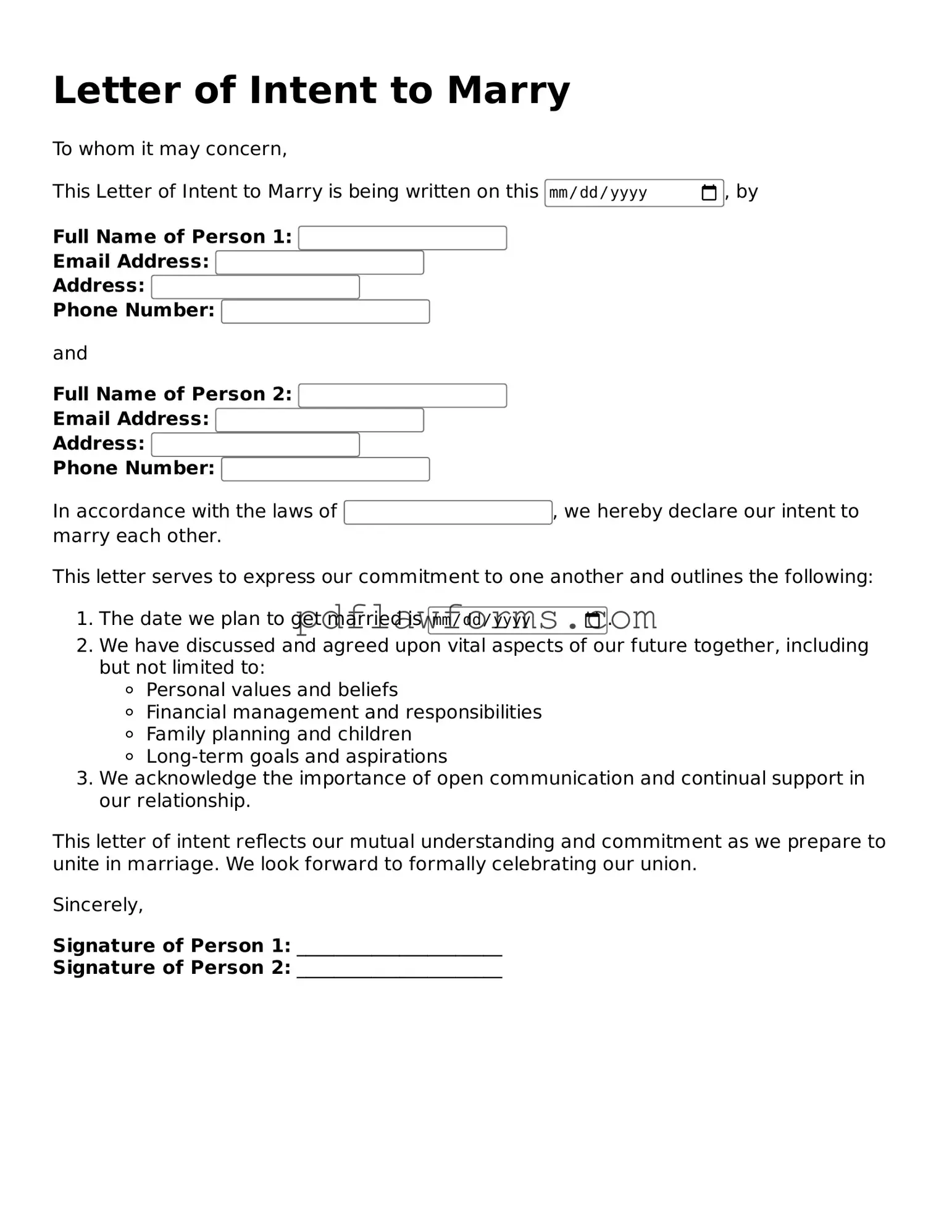Official Letter of Intent to Marry Form
The Letter of Intent to Marry form serves as a formal declaration of an individual's intention to enter into marriage. This document can clarify the couple's commitment and may outline various expectations or arrangements prior to the wedding. For those considering this important step, completing the form can provide a clear foundation for the future; click the button below to fill out the form.
Make My Document Online
